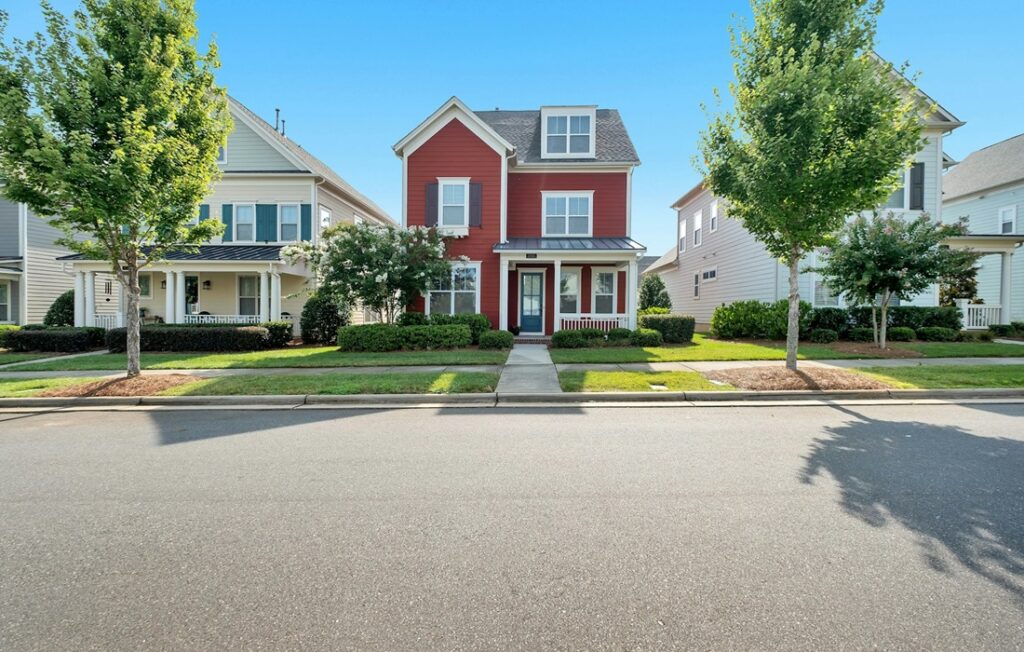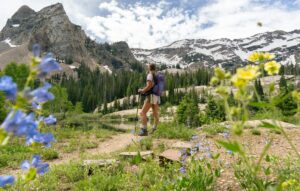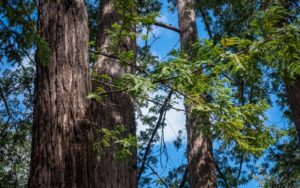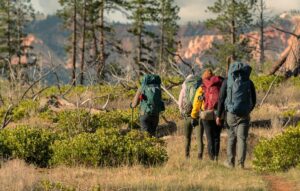Sprawling neighborhoods, picket fences, cars in every driveway, strip malls, cook-outs, and golf courses—welcome to the suburbs.
In today’s modern America, more than half of U.S. citizens claim to live in a suburban environment. Farther away from the hustle and bustle of a city’s downtown, filled instead with low-density, single-family dwellings with more space and characterized by spiraling outward growth (“suburban sprawl”), the suburbs are home to millions of people and animals alike. It’s often believed that the rise of the automobile is what led to suburban sprawl, giving people the flexibility to navigate farther distances than city-living would allow, and expanding onto new, undeveloped land.
And, as you can imagine, this has come at quite the environmental cost. The increased number of cars in suburban areas (meaning more CO2 emissions) as well as the added energy it takes to heat, cool, and give power to larger homes set farther apart from one another, means the carbon footprint of the suburbs is significantly higher than that of urban and rural areas. Likewise, wildlife habitats have been manipulated or destroyed as residential and commercial developments spread into areas that were once untouched. In fact, experts predict roughly 112,000 square miles of natural habitat (approximately the size of Colorado) will be further demolished for urban land use in the United States by the year 2030.
Yet, despite a shrinking habitat, many animals have not only found a way to adapt in an urban-suburban environment, but to thrive.
Animals, Biodiversity, and the New Suburban Habitat
Pigeons, racoons, squirrels…oh my! As I write this from the suburbs, there is no shortage of wildlife outside my window. White tail deer, rabbits, chipmunks, crows, songbirds, and hawks. There are many species that have made their homes right alongside the humans that occupy the suburbs. After all, their forests, meadows, creeks, and rivers were here first. And while suburban sprawl has certainly had a negative effect on things like pollution—particularly water pollution which now affects 40% of U.S. water sources—and habitat space, it’s nevertheless fascinating to see how the suburbs themselves have become a habitat all their own.
According to evolutionary biologist Menno Schilthuizen, author of Darwin Comes to Town: How the Urban Jungle Drives Evolution, there are a multitude of species that have successfully adapted to life in close proximity to people, light and noise pollution, and even new food sources. Among those who have adapted the best: squirrels, racoons, and pigeons.
Song birds, for example, have adapted to noise pollution by singing at a higher pitch than those of the same species living in more rural areas. Racoons and pigeons are thriving in urban and suburban areas, not only when it comes to population size, but also intelligence. Both racoons and pigeons in urban and suburban settings are able to recognize their food source—be it a garbage can or a person—and have become better at problem solving and avoiding danger than their rural counterparts.
And while this is a fascinating evolution, one that speaks to the adaptability of all living things, it doesn’t mean that we should keep charging forward, business as usual. Quite the opposite, in fact.
The Importance of Proper Land and Water Management
Green spaces in urban and suburban America are disappearing at a rapid rate, leading to a greater number of negative human-animal interactions—deer crashes, animal attacks, property destruction—as well as the loss of physical and mental health benefits that come with access to green spaces.
To learn more about the ties between the environment, the outdoors, and human health, check out this blog here and this one here.
There is a pressing need to move toward a mixed-use development style of city planning, where zoning blends residential, commercial, and cultural, rather than continuing to build outward and eating up natural spaces that could otherwise be preserved. This style of development ties in closely with the premise of the 15-minute city. And while this is a concept typically reserved for larger cities, the suburban lifestyle—which is highly car dependent and can take a long time to navigate—could benefit from these same principles.
When it comes to zoning and regulations, local municipalities have a significant impact which can lead to widespread change. For example, how large houses and residential lots can be is often decided at this level. These local legislators are often the ones who approve of new residential and commercial development projects. The standards set, how many projects are approved, where these projects go, and the natural land and water sources impacted in the process can have long-lasting, widespread effects on an entire region.
How Do We Make Positive Changes for the Future?
It starts close to home. Whether you live in a rural, suburban, or urban setting, pay attention to what’s going on at the municipal level. Who is being granted development rights and for where? When we prioritize and support policies that mitigate urban sprawl, we can retrofit places to better fit our communities’ needs, rather than continuously building new and letting existing infrastructure go to waste.
Prior to any new build, we should start with an ecological inventory on existing land, water, wildlife, and vegetation in the area—what critical habitats and local water sources might be damaged as the result of the project?
When it comes to designing sustainable cities and redesigning the suburbs to be better for people and nature, progress is slow and successes—especially when it comes to developing habitat linkages and improving ecological functionality—is yet to be seen. In the meantime, “Planners, developers, architects, landscape architects, elected officials, businesspeople, environmentalists, and concerned citizens have a unique opportunity to make the suburbs more environmentally, socially, and economically stable…” (Thomas L. Daniels).
- Pay attention to local elections and legislation – how is development being supported and in what capacity?
- Educate your local leaders on the importance of natural, green spaces in urban and suburban environments.
- Make your yard a wildlife-friendly habitat by planting native flora and avoiding the use of toxic pesticides.
- Consider how your actions may be impacting the natural habitats around you. Whenever possible, try to cut back your carbon footprint by driving less or combining your errands, composting food waste, reducing plastic usage, and reducing the usage of pesticides, insecticides, chemical fertilizer and other pollutants in your yard.
- Support wildlife organizations in your neighborhood and across the country who are striving to protect, rehabilitate, and rehome animals impacted by our sprawling urban environments.
Check out these EarthShare Partners doing just that!
- Audubon Society of Northern Virginia
- California Native Plant Society
- Chesapeake Wildlife Heritage
- Columbus Zoological Park Association
- Defenders of Wildlife
- Desert Tortoise Preserve Committee
- Echoes of Nature
- Lake Erie Nature and Science Center
- Massachusetts Audubon Society
- Michigan Wildlife Conservancy
- Ohio Wildlife Center
- Ohio Wildlife Rehabilitators Association
- West Shore Wildlife Center
- Wildlife Haven




